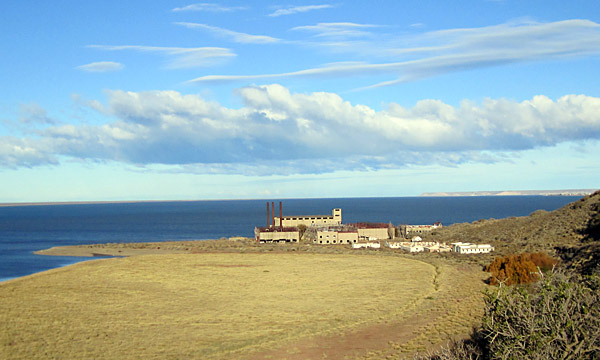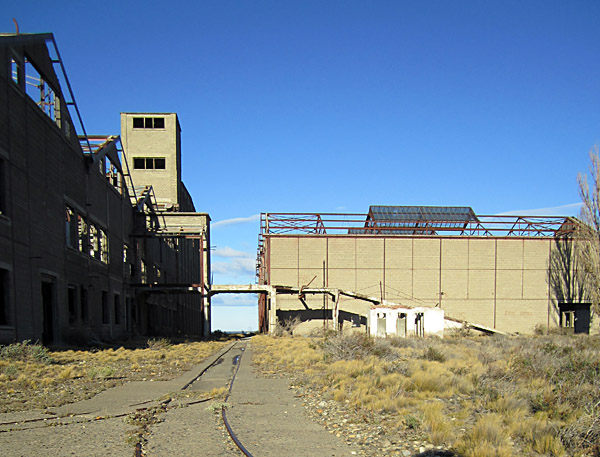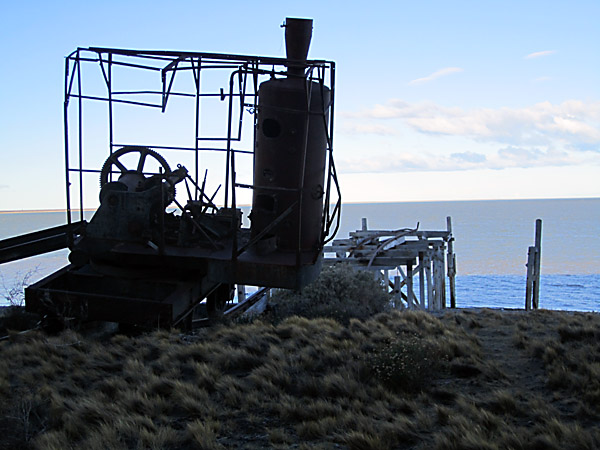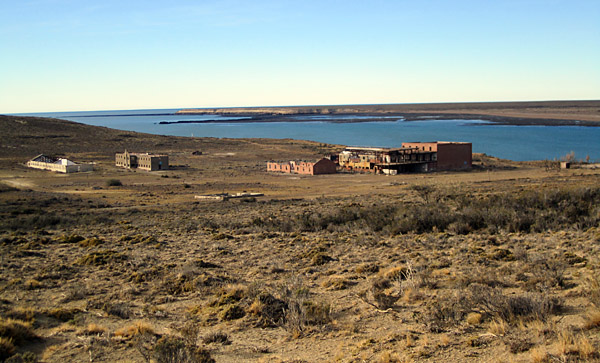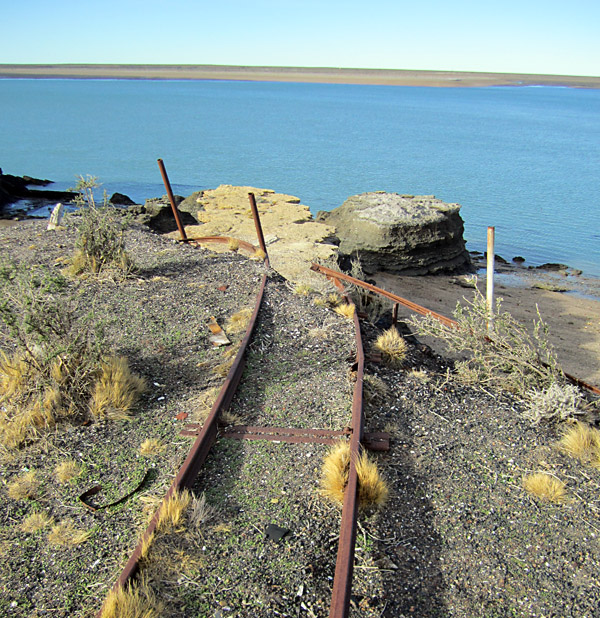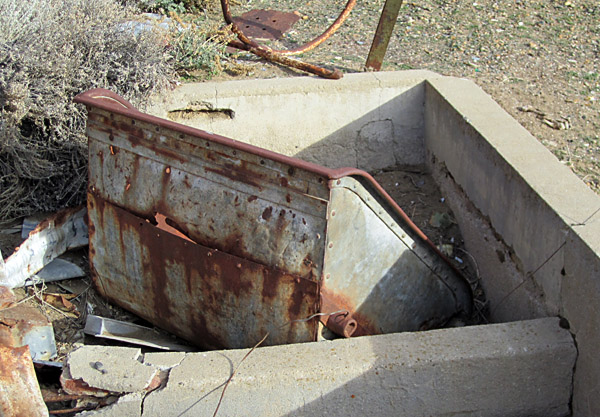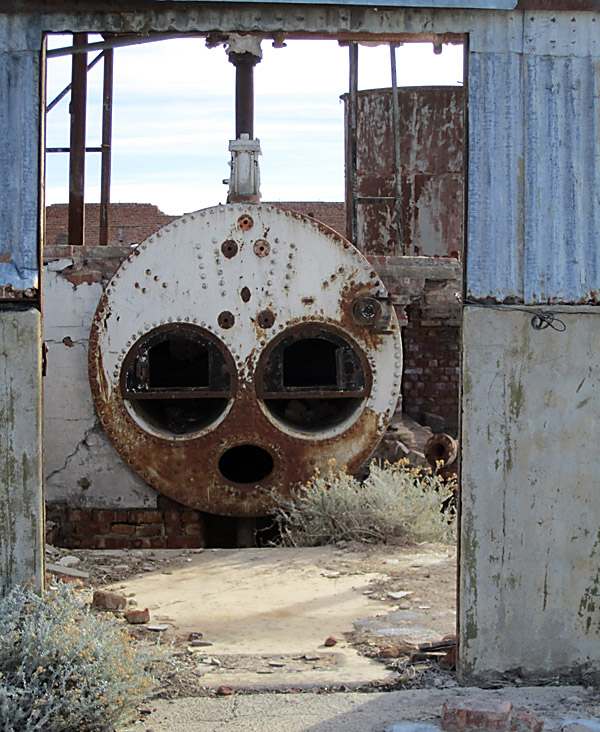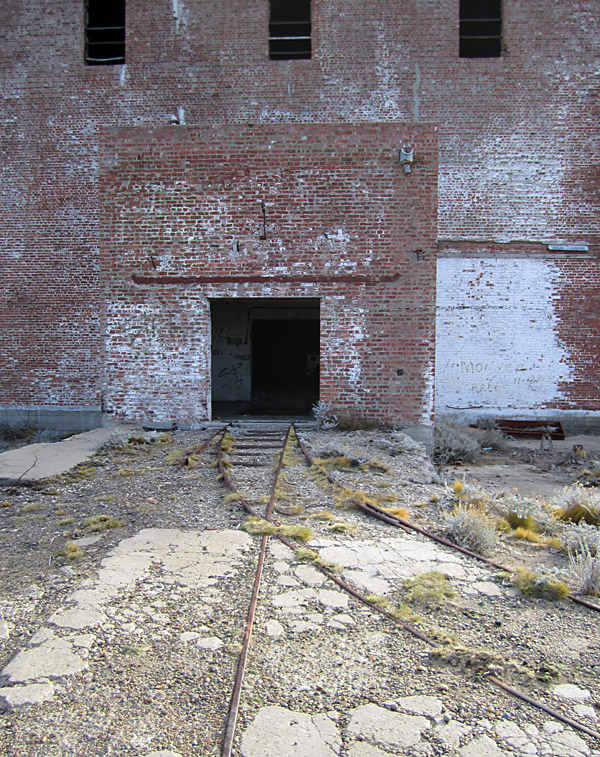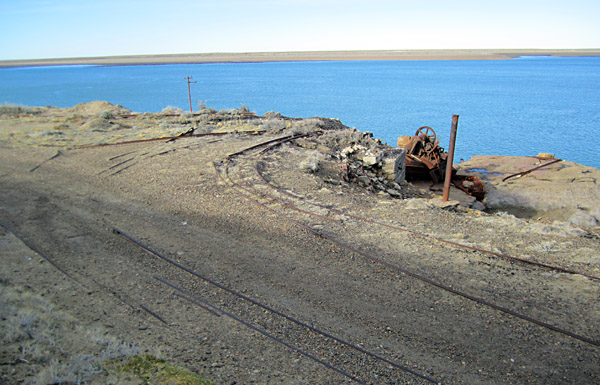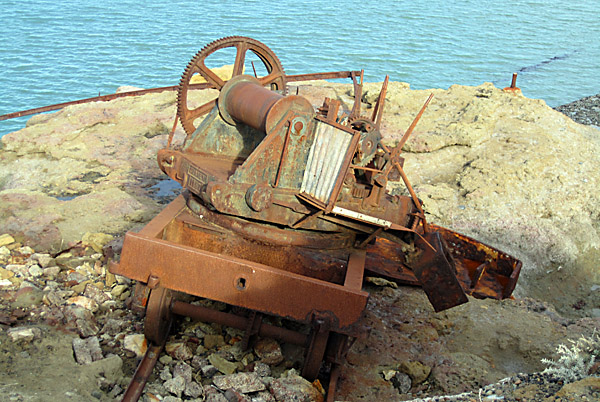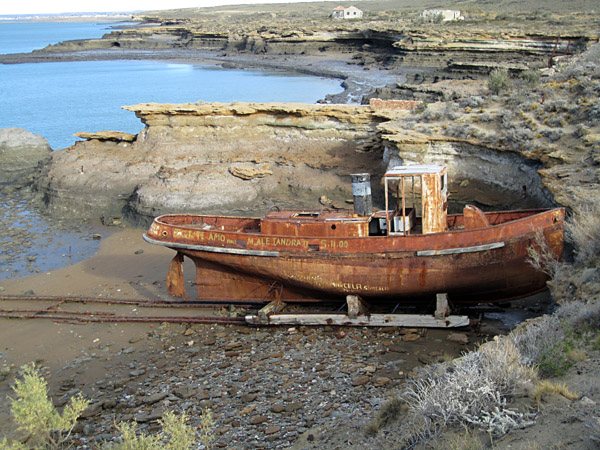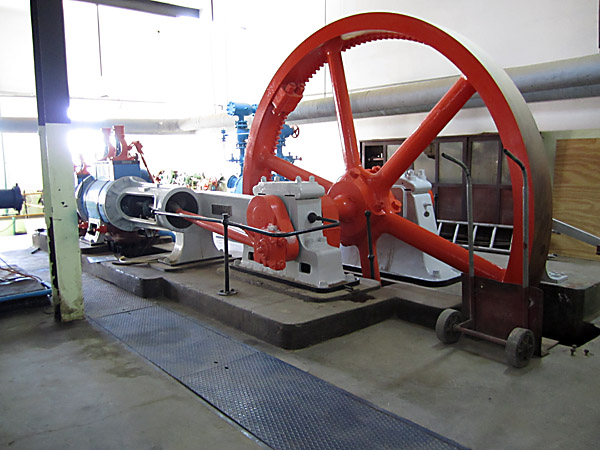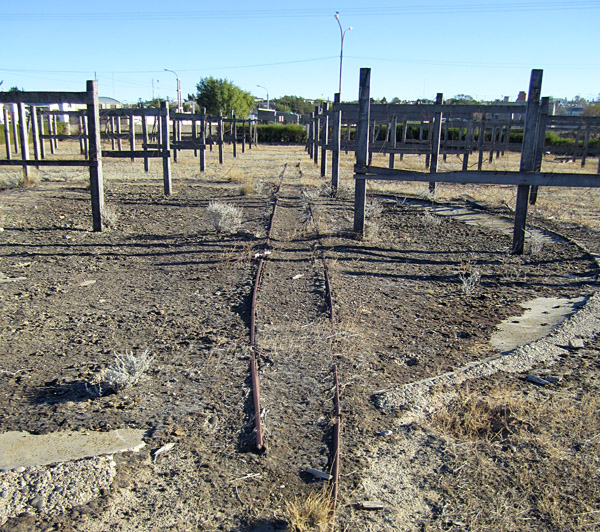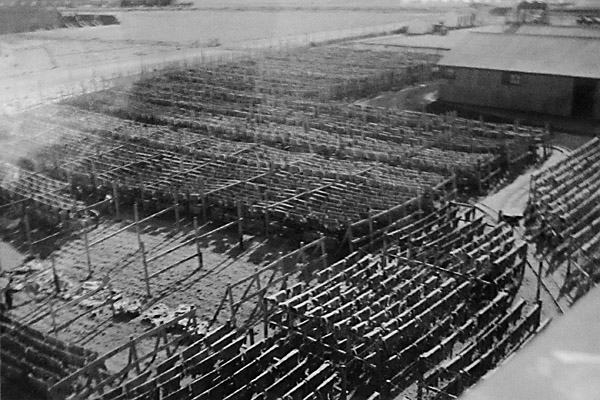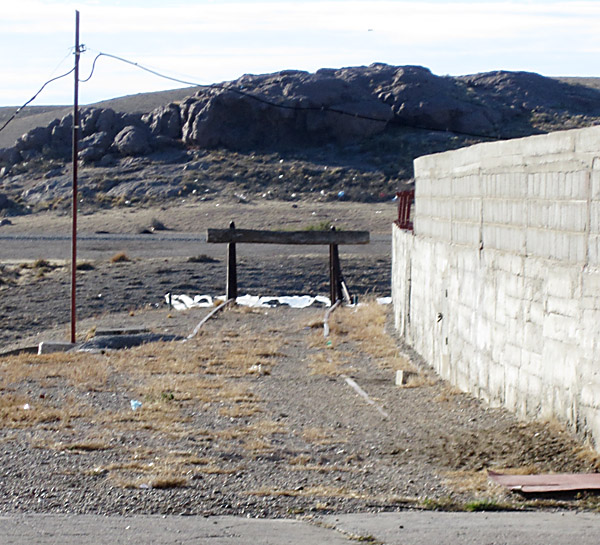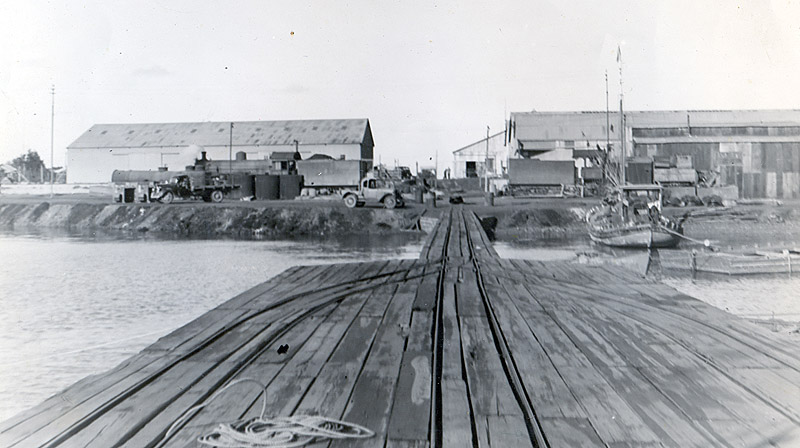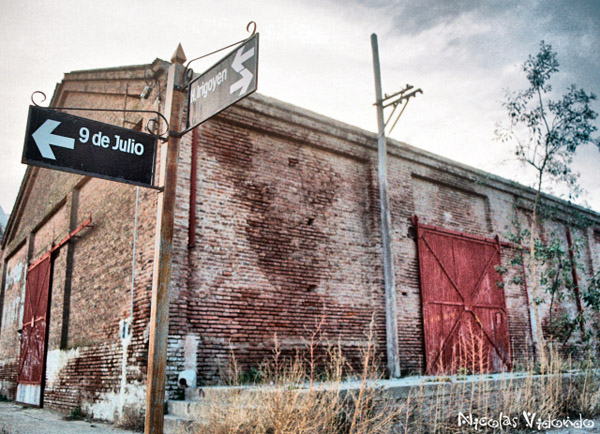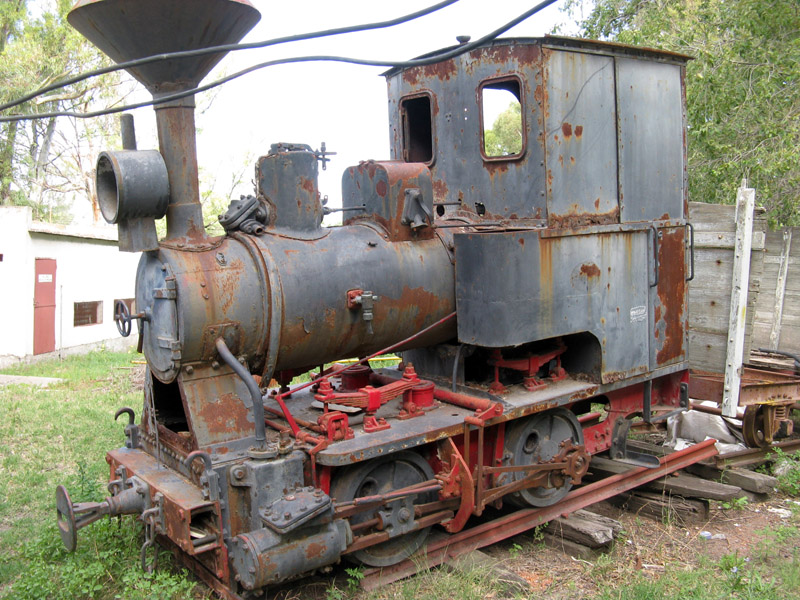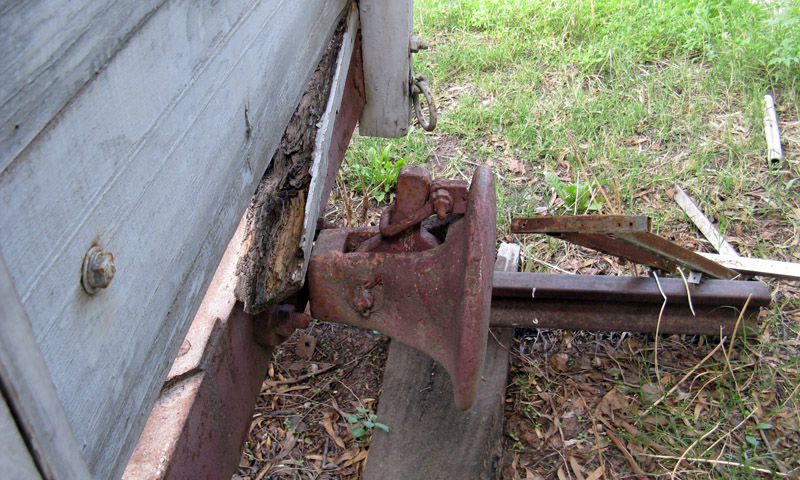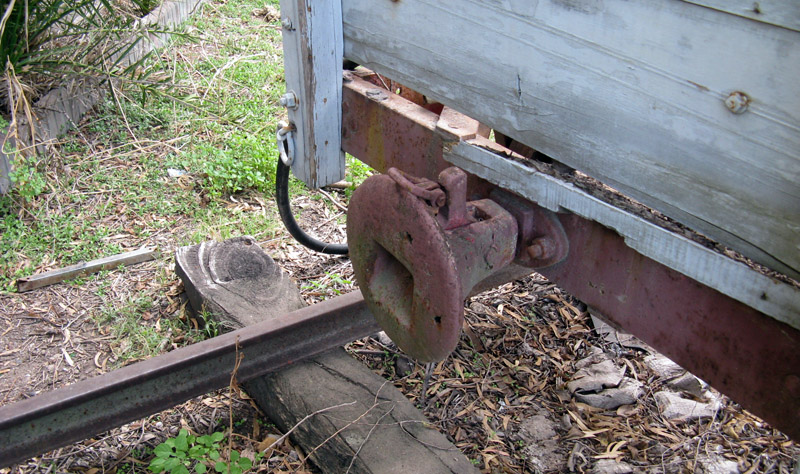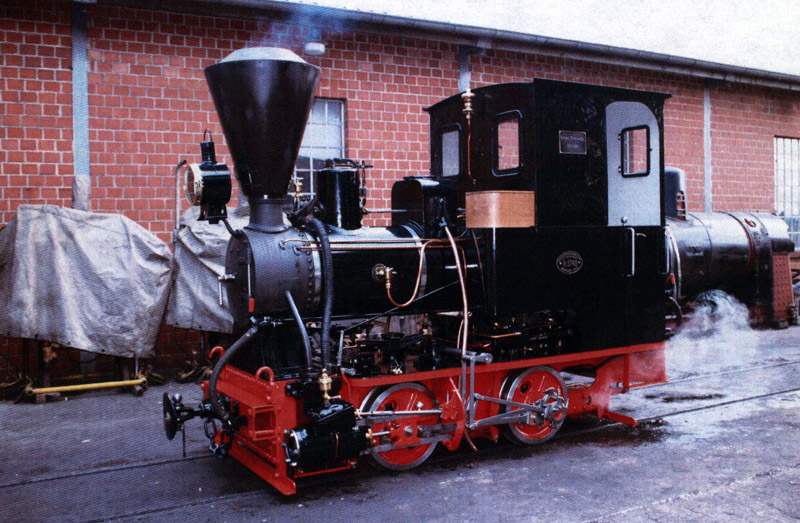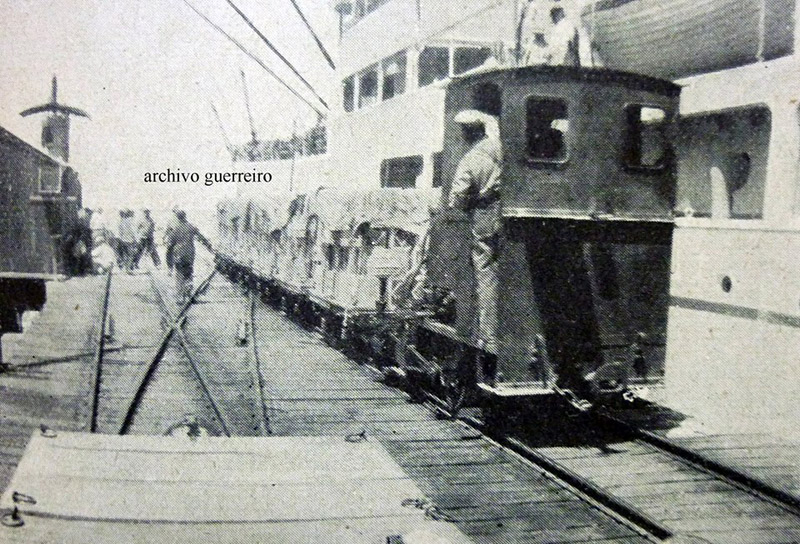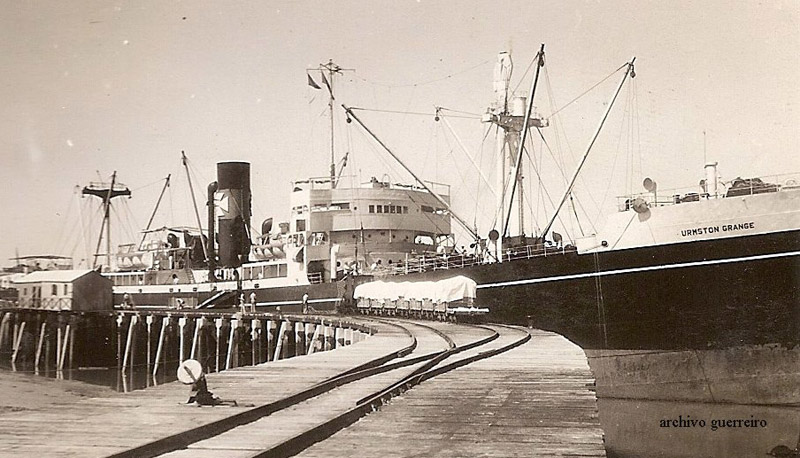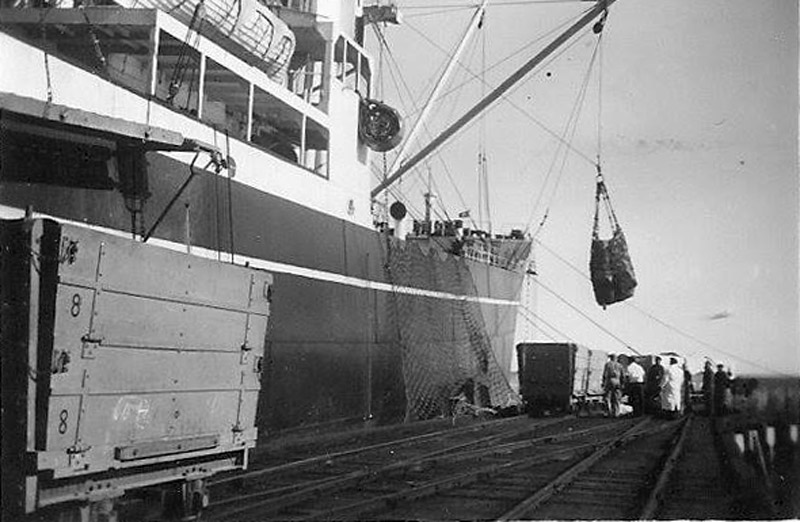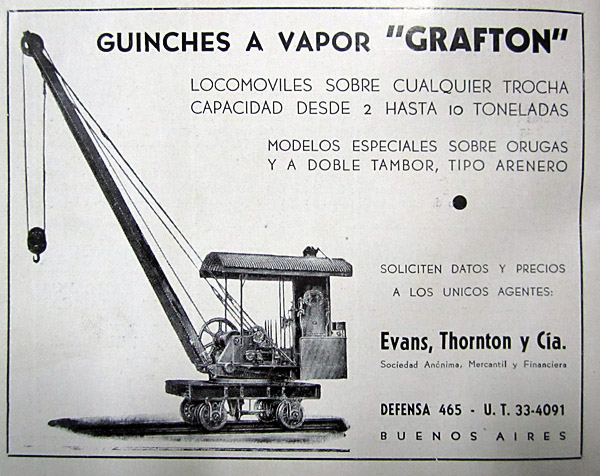 |
 |
|||||||||||||
 |
||||||||||||||
The Atlantic coast of Santa Cruz province Puerto Santa Cruz
First a view from the edge of the escarpment, showing the plant's location on the point between the Río Santa Cruz on the right and the Río Chico to the left. The open sea is ahead. Next a view within the confines of the frigorífico. By 2011 all portable items such as wagons and loose rails had been removed for scrap but any track embedded in concrete remained in situ.
Finally, the full size Grafton steam crane (probably broad gauge, but see Pto. San Julián below), with the remains of one of the two muelles behind. . Puerto San Julián Like other similar facilities, this frigorífico was located with a view to the raw materials arriving on their own four feet and the finished product being shipped northwards by sea in moderate sized vessels well able to load from a small private jetty or 'muelle'. As such sites might be a long way from any town a workers' barracks (left of picture) was an essential part of the whole.
On first inspection (May 2011) the internal tracks and those to a nearby loading point appeared to be of 60cm gauge. This track below now leads over a cliff edge but almost certainly this was to one of two muelles.
Like most other abandoned locations all easily moved metalwork has been stripped out. However, this skip wagon body would appear to have been missed by the scrappers. Its metalwork looks perhaps to have been galvanised, maybe a pragmatic feature in a meat freezing plant, unless this is just the result of life in a semi-desert climate.
Opportunistic scrap merchants sometimes balked at stripping out heavy plant, especially when it had been concreted into place. This Scotch boiler has thus survived.
Having seen 60 cm gauge tracks, this metre gauge trackwork (below) leading from a wool compressor or weighbridge shed prompted a quick reassessment. Perhaps the route along the clifftop to the main muelle had used larger wagons.
Strangely, it appears that the trackwork to the main muelle was in fact of three-rail mixed gauge. This location is a couple of hundred yards from the main buildings and on a steady gradient. Haulage uphill, albeit of empty wagons, would seem to have needed more than merely man-power.
Compounding the surprises, this Grafton steam crane, now sadly very incomplete, is of standard gauge, and on bullhead rail, a distict rarity in the Argentine! The muelle on which it ran was probably more like a short platform constructed to level out the clifftop, for there is deep water close inshore and a conventional facility built out over the water may not have been necessary.
In a sheltered tidal bay, closer to the main buildings, there still lies the frigorífico's own tug. The scrap merchants have not omitted to recycle the bronze propellor.
Puerto Deseado The big frigorífico was built in the late 1920s by the Soc. Coop. Frigorífica de Puerto Deseado which was a Braun-Menéndez company, but was operated for many years by CAP, the Corporación Argentina de Productores de Carnes. Unusually it seems not to have had its own muelle, all produce being taken back through town to the main port facilities. This may be because the factory, whilst on the shore, faces a wide area of shallow reefs. More recently it has been taken over by CARSA and now functions primarily as a freezer plant for seafood, rather than as an abattoir and meat freezer. However, this new use has resulted in the preservation of most of the 1920s equipment, albeit now disused. The upper floors still contain the carcass-processing production line and the rendering boilers for the production of tallow. More to the point, a large Robey tandem compound stationary engine survives on the ground floor, superficially well cared for though not in working order. This may be the last frigorífico in Patagonia containing early 20th century equipment; all others from that period having closed and been stripped of their fittings. The Robey compound engine was directly connected to a pump for the refrigeration system. This is the blue item behind the left of the fly-wheel.
As far as railway operations are concerned, there are still 60cm gauge tracks in the old fleece drying yard, and the tail end of a broad gauge siding for much of this frigorífico's raw material arrived by rail.
The wooden racks between which the 60cm gauge tracks remain (above), held wires on which the fleeces were dried before compressing into bales. In the photo below (courtesy of CARSA staff) the drying yard is full of fleeces and the narrow gauge tracks can be seen to the right.
The broad gauge siding led directly off the main FCE yard at Puerto Deseado station. Whilst most has been lifted, the tail end and buffer stop remain.
When first in Comodoro Rivadavia in 1975 I was told that there had been a narrow-gauge steam-worked line at Puerto Deseado as late as 1972. However, the CARSA staff in 2011 were emphatic that their rail system had used only man-power. Further north San Antonio Oeste This line connected the warehouse (the Barraca Lahusen) in the far distance to the muelle, which is still in existence, as the Muelle Pescadero (the fishing muelle). (3)
Unlike most tracks on muelles which stand proud of the wooden deck, the rail surface is flush with the deck. This is a modern view found on the web (4) of the old Lahusen Barraca. The line, so far is known started near the street sign and headed off to the right and the shore.
Frigorífico Sansesina Three steam locomotives were used, numbered I, II and III, joined later by a Ruston diesel. In the early years meat was supplied from here to the central market in Bahía Blanca; it was conveyed there by wagons of the steam tramway. We do not know whether these were attached to a goods train or whether they were taken by one of the tram engines. This is may be not as fanciful as it sounds as there is a picture of one of the steam trams with a passenger trailer on the dock-side at Puerto Galván. After the second world war, fruit from the upper Río Negro was brought here and pre-cooled in their refrigerators before being exported via the frigorífico's muelle. Another interesting thing was the coupling used. The coupling on the locomotive lying at the entrance to the abandoned works is clearly of conventional link-and-pin type.
However the coupling on the wagons was of a self coupling type as seen in the close up of the coupling on a wagon found next to the engine. It will be noted that the opening on the buffer face is relatively much deeper than that on the traditional coupling on the locomotive. There is also no loose pin; instead there is a pivoted hook with a lever to allow the coupling to be opened for uncoupling and which can be locked by the shackle. In this view the coupling would allow automatic coupling and also uncoupling by pulling back on the lever.
If the shackle is dropped over the lever as shown in the photo below, when the wagon is not coupled, it prevents its being so, thus allowing propelling withou t the need to uncouple at the end of the move. If the shackle is dropped over the lever when the wagon is coupled, it prevents any inadvertent uncoupling.
Locomotive Nº III was rescued, and sent to Europe, where it has been restored, and is seen here in steam. A copy of this view had been given to Museo Taller Ferrowhite in Ingeniero White.
From Héctor Guerreiro comes this view of a train alongside a ship.
From this same source is another more distant view showing the sweeping curve of the muelle and the start of the loop which permitted the escape of the engine which had brought in the train to the muelle.
And finally a view of a drop side wagon showing the coil springs used in the wagon suspension. (4)
References:
11-2-2018 |
||||||||||||||
Main pages
Chapter 8
The big estancias and 'frigoríficos'


